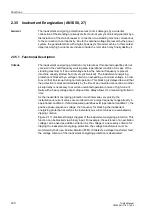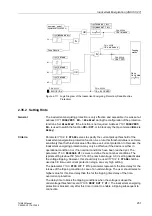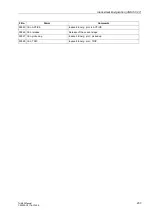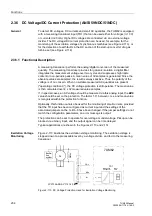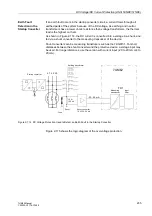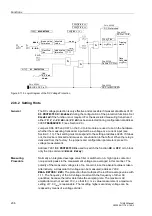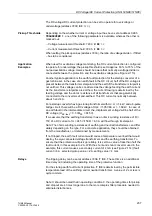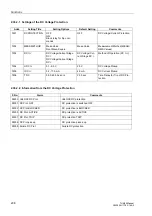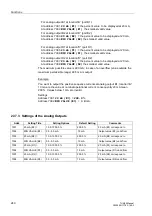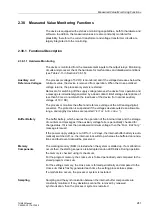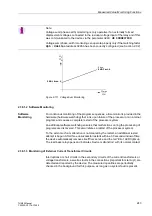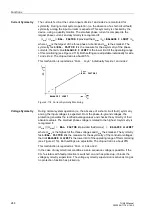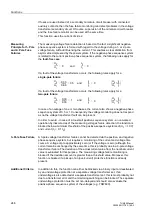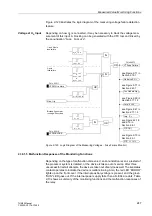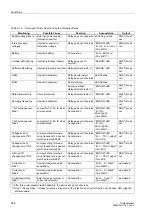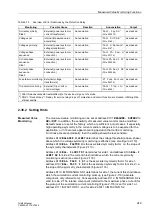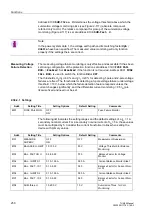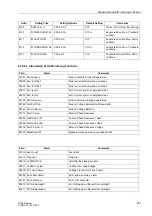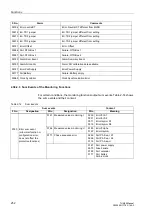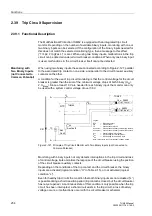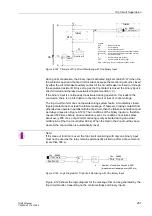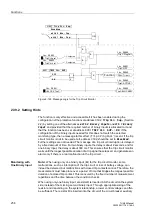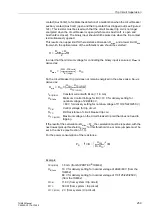
Functions
244
7UM62 Manual
C53000-G1176-C149-3
Current Symmetry
The currents fed in at the current inputs of side 1 and side 2 are monitored for
symmetry. During normal system operation (i.e. the absence of a short-circuit fault),
symmetry among the input currents is expected. This symmetry is checked by the
device, using a quantity monitor. The smallest phase current is compared to the
largest phase current, and asymmetry is recognized if:
|
I
min
| / |
I
max
| <
BAL. FACTOR I
provided that
I
max
/
I
N
>
BALANCE I LIMIT
/
I
N
where
I
max
is the largest of the three phase currents and
I
min
is the smallest. The
symmetry factor
BAL. FACTOR I
is the measure for the asymmetry of the phase
currents; the limit value
BALANCE I LIMIT
is the lower limit of the operating range
of this monitoring (see Figure 2-118). Both settings are adjustable individually for side
1 and side 2. The dropout ratio is about 95 %.
This malfunction is reported as ”
Fail. Isym
” individually for side 1 and side 2.
Figure 2-118 Current Symmetry Monitoring
Voltage Symmetry
During normal system operation (i.e. the absence of a short-circuit fault), symmetry
among the input voltages is expected. From the phase-to-ground voltages, the
protection generates the rectified average values and checks the symmetry of their
absolute values. The smallest phase voltage is related to the highest. Asymmetry is
recognized if:
|U
min
| / |U
max
| <
provided that |Umax|
>
where U
max
is the highest of the three voltages and U
min
the smallest. The symmetry
factor
is the measure for the asymmetry of the conductor voltages;
the limit
is the lower limit of the operating range of this monitoring
(see Figure 2-119). Both settings are adjustable. The dropout ratio is about 95%.
This malfunction is reported as ”
In the case of unsymmetrical conditions a zero sequence voltage is possible. If the
90–%–stator earth fault protection is switched on and has picked up, it blocks the
voltage symmetry supervision. The voltage symmetry supervision is active as long as
no protection function has picked up.
I
min
I
N
BALANCE I LIMIT
Slope:
BAL. FACTOR I
I
max
I
N

